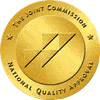We are pleased to share the following guest blog post by Juno Min, MD, describing his first mission to Nukus, Uzbekistan, through vRad’s Partnership with MSF (Médecins Sans Frontières). During his mission, Uzbekistan was experiencing a large outbreak of multidrug-resistant tuberculosis (MDR-TB) which had devastating results to local and global populations as the tuberculosis spread.
Dr. Min graduated from Harvard University, and completed medical school and radiology residency at Stanford. During medical school, he spent a year doing HIV research in Zimbabwe, during which time he developed his interest in infectious diseases and international health.
MSF Mission to Nukus, Uzbekistan
MSF has been working in Nukus since 1997. Nukus is the capital of Karakalpakstan, which is an autonomous republic in the far west of Uzbekistan. In Karakalpakstan, the rate of multi-drug-resistant tuberculosis (MDR-TB) is estimated at 40 percent of new TB cases and 70 percent of retreated patients. The numbers are staggering and raise the concern about a future TB epidemic with restricted treatment options.
I spent the first part of the mission visiting the hospitals and clinics in Nukus and in the neighboring districts. I have worked in hospitals in Zimbabwe and other developing countries in the past, but I was still surprised at the condition of some of the hospitals and clinics and in particular the antiquated state of the radiology facilities. The vast majority of the radiology equipment dates from the 1980s, when Uzbekistan was part of the Soviet Union. The machines are cumbersome to use, and malfunction is not uncommon. However, despite the outdated equipment and substandard films, the local doctors rely heavily on X-ray to diagnose new cases of TB, evaluate response to anti-TB treatment and follow previously treated patients. In some cases, the importance placed on radiologic studies in clinical decision making is even greater than in countries with modern, state-of-the-art equipment.
I was also surprised by the variability in radiology experience among the physicians who read films. There were well-trained radiologists, some of whom were quite skilled; I met a few who had been working as radiologists for more than 30 years, dating back to the Soviet era. However, in many of the hospitals and clinics, there were clinicians reading all the films who had little or no formal training in radiology. Many of the clinicians were eager to learn more about radiology but had limited experience and did not even have access to textbooks or online resources. For one week, I provided training in basic radiology to the clinicians and also more specific training in radiographic diagnosis of TB to the radiologists.
The training was met with a positive response, but there is a lot more that could be done.
Overall, it was an unforgettable experience. Above all, I will remember the people I met during the mission. There is an extremely dedicated group of people that work for Médecins Sans Frontières, and it was a privilege to work with them toward a common goal. Furthermore, the experience would not have been the same if I had not met and befriended the people of Karakalpakstan. They live in extremely harsh conditions (low of -40° F in the winter, high of 130° F in the summer), with limited resources and an infrastructure that has been deteriorating since their independence 20 years ago. In spite of or possibly because of these challenges, they are kind, generous people who maintain a positive attitude in the face of adversity and will continue to survive and hopefully thrive.
Special thanks to Dr. Min for sharing his experience on the mission with the readers of our blog, and for his continued participation and active support of our partnership with MSF.





